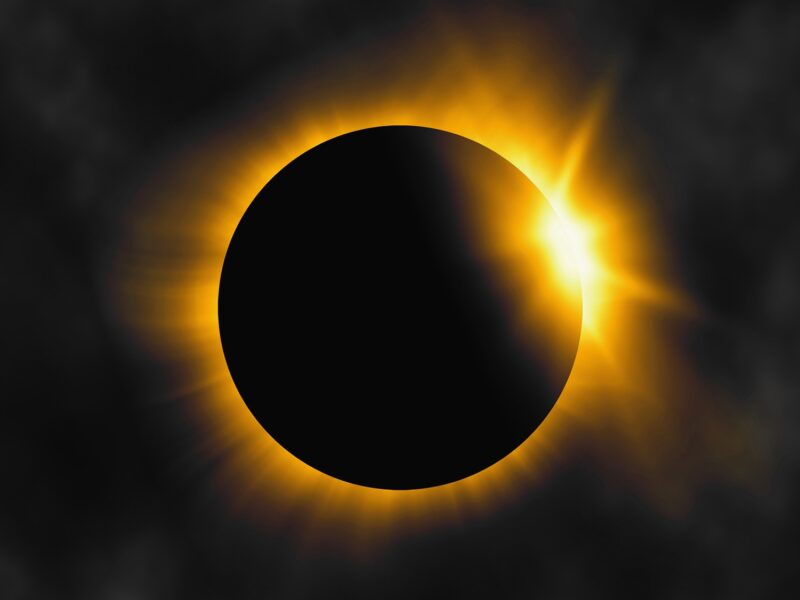‘Atoms For Peace’ Helped Spread Nuclear Weapons, Says Prof
Good intentions — that’s what President Dwight Eisenhower surely had when he made the famous “Atoms for Peace“ address to the United Nations on Dec. 8, 1953. But according to a Texas A&M professor, Eisenhower’s plan for peace had unintended consequences — the spread of nuclear weapons. Iran, now under suspicion by the U.S. and other nations to be developing nuclear weapons, was an early beneficiary of the Atoms for Peace program.
“My country wants to be constructive, not destructive,” said Eisenhower in the famous speech. “It wants agreements, not wars among nations.” With that peaceful message, the President ushered in a new era of atomic energy cooperation. The Atoms for Peace program allowed countries to share with one another materials, equipment and knowledge to create nuclear energy.
Nuclear technology is dual use: one way, it can be used as a source of energy, but another way can create weapons of mass destruction.

“The goal was to help developing countries produce electricity and conduct basic research in nuclear engineering,” says Texas A&M Assistant Professor of Political Science Matthew Fuhrmann, author of a new book called Atomic Assistance: How “Atoms for Peace” Programs Cause Nuclear Insecurity.
He says countries receiving such assistance became more likely to acquire nuclear weapons, especially if after receiving aid, they experienced an international crisis. “On average, countries that did get this type of assistance were more likely, statistically speaking, to build nuclear weapons,” he says.
Fuhrmann says Eisenhower thought the program would give the U.S. leverage in its foreign policy. He points to Iran, a United States ally after WWII. “Beginning in the 1950s, the U.S. provided Iran civilian nuclear assistance, including with the Tehran research reactor,” he explains.
Iran’s location made it a good strategic partner for gathering intelligence on the Soviet Union, says Fuhrmann. “There was a quid pro quo — we’ll give Iran this technology and in return, it’ll help us with some political and strategic goals,” he adds.
Fuhrmann says although the U.S., Israel and other nations suspect that Iran is developing weapons, no definitive proof exists and Iranian officials deny they have a nuclear weapons program.
U.S. and Canadian nuclear assistance to India resulted in a peaceful nuclear energy program, “but then they [India] took the plutonium out of a civilian reactor and used it to build weapons,” says Fuhrmann.
The nations with nuclear arsenals now are the U.S., Russia, the United Kingdom, France, China, India, Pakistan, North Korea and Israel.
All but four states — Israel, Pakistan, North Korea and India — have signed the Treaty on the Non-Proliferation of Nuclear Weapons (NPT), a 1968 agreement designed to prevent the spread of nuclear weapons. The treaty provides for the sharing of nuclear technology only for peaceful purposes and says only five countries — the U.S., Russia, the U.K, France and China — can have nuclear weapons, because they already had them when the treaty was written. Iran has signed the treaty along with almost 200 other countries.
“Israel can only join the treaty if it gives up its nuclear arsenal. But the Israelis believe the weapons are critical for their security,” says Fuhrmann.
Pakistan received civilian nuclear assistance from many Western suppliers — including Canada, the U.K. and U.S. — and Fuhrmann says Pakistan has since provided military nuclear assistance to Iran, Libya and North Korea. Libya does not have a known nuclear weapons program, but North Korea does. The extent of North Korea’s arsenal is unknown and somewhat limited by its lack of missile technology, but the country has performed nuclear tests.
And although India refuses to sign the NPT, in 2005, the U.S. made a highly controversial deal with the country to help develop its nuclear program. “The deal was damaging for non-proliferation,” says Fuhrmann. “We did it because India is strategically important as a counterweight to China. We wanted to counter Chinese influence and cultivate closer ties to India.”
And the result?
“It’s hard to say,” he notes. “Maybe sufficient time hasn’t passed to judge. But it did seem to make India happy and more likely to cooperate.”
Fuhrmann says there are instances where nuclear assistance has not resulted in the creation of nuclear weapons. “The U.S. helped Jamaica create a small nuclear reactor and no weapons were made in the process,” he explains.
But due to the likelihood that countries will use peaceful nuclear assistance for armament, Fuhrmann says we should think twice about sharing this technology. “It’s true that countries can extract political and economic benefit from nuclear cooperation,” he says. “There are tradeoffs here that governments must wrestle with.”
He believes the International Atomic Energy Agency (IAEA), which inspects nuclear facilities, needs tougher rules. “International organizations don’t have a lot of teeth. The IAEA can do an inspection and say this country is breaking the rules, and other countries can institute sanctions,” he explains. “In extreme cases, the U.S. could attack. So the real enforcer here is the U.S.”
Fuhrmann says there are no simple solutions. “Some would say maybe we can keep the genie in the bottle and export technology freely and not worry,” he says. “That kind of thinking is potentially dangerous.”
Media contact: tamunews@tamu.edu.





